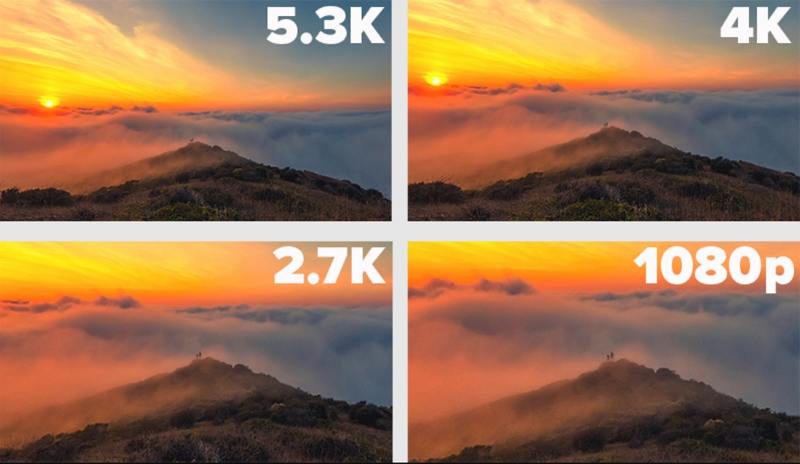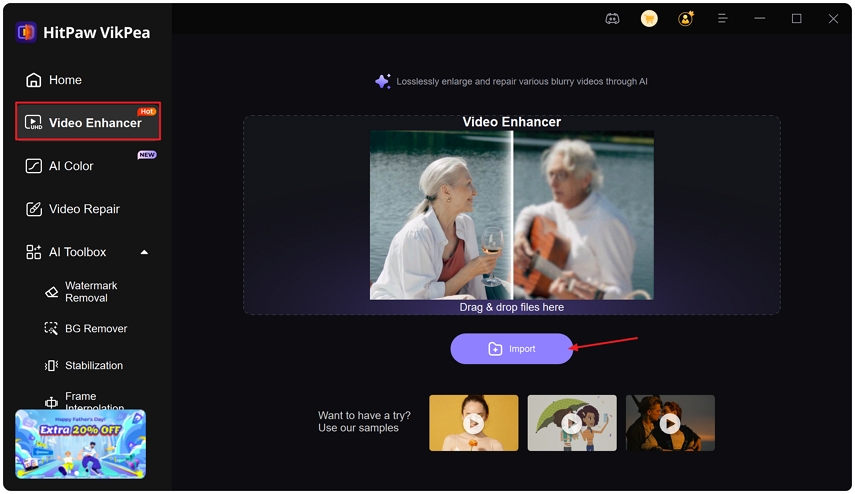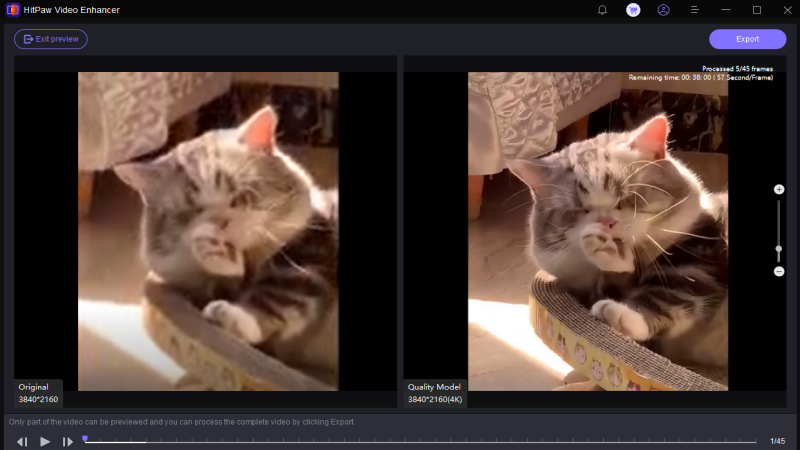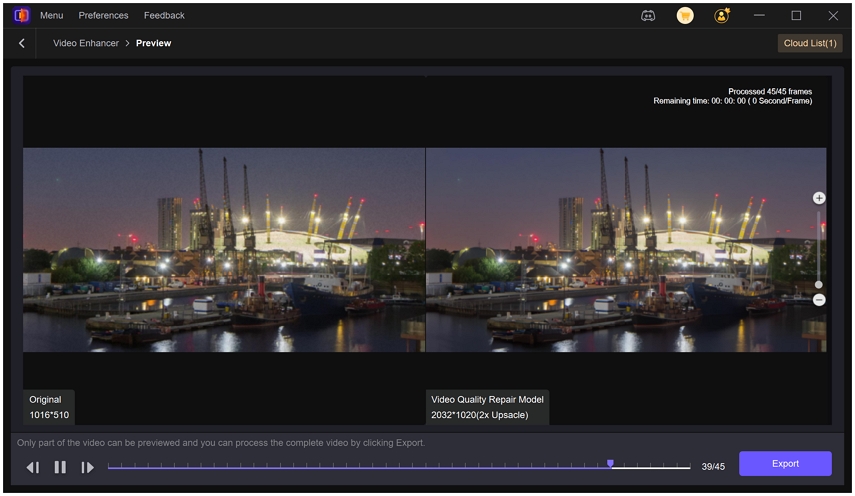GoPro Video Resolution: Optimize Settings for Every Adventure
Dive into the world of GoPro video resolution where every frame counts. Whether you're shooting extreme sports or scenic landscapes, understanding your GoPro camera resolution can transform your footage into cinematic masterpieces. This guide covers popular GoPro settings, the best resolution choices for various activities, and how to tweak them post-recording for flawless results.
Part 1. What Is the Resolution of the GoPro Camera?
GoPro's video resolution determines the clarity and detail of your footage, varying by model. Newer devices like the Hero 13 support 5.3K, while older models like the Hero 4 or Hero 3 offer 4K and 1080p. Below are popular GoPro cameras and their max resolutions:
Popular GoPro Camera Video Settings and Resolutions
| GoPro Model | Video Resolution Options |
|---|---|
| HERO 13 Black | 5.3K, 4K, 2.7K, 1080p (Various FPS Options) |
| HERO 12 Black | 5.3K, 4K, 2.7K, 1080p (Multiple Frame Rates available) |
| HERO 11 Black | 5.3K, 4K, 2.7K, 1080p with advanced settings |
| HERO 10 Black | 5.3K, 4K, 2.7K, 1080p (Enhanced stabilization and performance) |
| HERO 9 Black | 5K, 4K, 2.7K, 1080p (Reliable performance for everyday use) |
| GoPro Max (360°) | 6K spherical, standard 1080p modes for 360° video |
Part 2. What are the Difference Between GoPro 5.3K, 4K and 1080p?
Choosing between 5.3K, 4K, and 1080p resolutions can greatly impact your video's overall quality, storage needs, and editing workflow. Higher resolutions, like 5.3K, capture more detail and offer greater flexibility in post-production, while 1080p is ideal for quicker processing and sharing. Understanding these differences is crucial for matching your recording settings to your specific shooting requirements and hardware capabilities.

Image Quality:
- 3K: Provides the highest pixel density and sharp detail, ideal for professional-grade content and cropping in post.
- 4K: Offers excellent clarity and color depth, balancing detail with file manageability.
- 1080p: Delivers good quality for everyday use but lacks the fine detail of higher resolutions.
File Size & Storage Requirements:
- 3K: Produces larger file sizes, demanding more storage and higher bitrate for optimal quality.
- 4K: Generates moderately large files, requiring decent storage but more manageable than 5.3K.
- 1080p: Yields smaller file sizes, making it ideal for quick sharing and less intensive on storage resources.
Editing and Processing Demands:
- 3K: Requires powerful hardware and advanced editing software to process high-resolution footage smoothly.
- 4K: Strikes a balance, offering high-quality output without as extreme hardware demands as 5.3K.
- 1080p: Is easier on most systems, allowing for faster editing and rendering with less powerful computers.
Frame Rate Flexibility:
- 3K: May limit high frame rate options on some GoPro models due to the high resolution.
- 4K: Often supports a wide range of frame rates, making it versatile for various shooting scenarios.
- 1080p: Typically allows for the highest frame rate options, beneficial for capturing fast-paced action.
Usage Scenarios:
- 3K: Best suited for professional filming where high detail and post-production flexibility are essential.
- 4K: Ideal for content creators who need a balance of quality and manageability for most applications.
- 1080p: Perfect for casual recordings, fast social media uploads, and situations where storage and processing power are limited.
Understanding these differences in GoPro video resolution options helps you select the best setting for your creative needs, ensuring that every shot looks its best whether you're using GoPro 4K 120fps for slow motion or sticking with the reliable GoPro 3 resolution for everyday adventures.
Part 3. Which GoPro Video Resolution Should You Choose in Different Situations
Choosing the right GoPro resolution is not just about clarity-it's about matching the camera's capabilities with your activity. Whether you're vlogging, traveling, cycling, or capturing underwater adventures, every situation demands a specific combination of resolution, frame rate, and field of view (FOV) for the best results. In this section, we outline ideal settings tailored to various shooting scenarios, ensuring that your footage looks as stunning as the moment you experienced.
Recommended Settings for Different Situations
Scenario
GoPro Video Resolution
Frame Rate (FPS)
Field of View (FOV)
Why It Works
Vlog
1080p
60fps
Wide to Linear for clear, personal shots
Smooth motion, smaller file size
Travel
4K
30-60fps
SuperView
Crisp details for scenic vistas
Cycling
2.7K
120fps
Medium to Narrow for reduced distortion
Slow-motion stability
Underwater
4K
60fps
Wide to Linear for expansive views
Vibrant colors, minimal motion blur
Sports
4K
120fps
HyperView
Ultra-slow-motion replays
Scenery
5.3K
30fps
Max SuperView
Maximum detail for landscapes
Tip: Use higher FPS (e.g., GoPro 4K 120fps) for action shots and lower FPS for cinematic scenes.
Part 4. How to Improve GoPro Video Quality for High-Quality Upload
Even well-shot GoPro footage can suffer from compression artifacts, noise, or softness after editing or platform upload. HitPaw VikPea Video Enhancer uses AI models to restore texture, reduce noise, sharpen edges, and upscale resolution so your action clips look crisp on big screens or social feeds. Whether you need noise reduction for night footage, sharper edges for fast action, or upscaling for 4K/8K delivery, a few simple steps in VikPea will dramatically improve final results.
- AI driven upscaling to 4K and 8K while preserving natural texture and detail.
- Noise reduction that removes sensor grain while maintaining fine details and motion clarity.
- Automatic frame interpolation for smoother slow motion without introducing distracting artifacts or blur.
- Sharpen model enhances edge definition without creating halos or unnatural contrast.
- Portrait model optimizes faces by restoring skin tone, reducing blemishes, and improving clarity.
- Batch processing and GPU acceleration speed up large projects while preserving output quality.
- Flexible export presets including bitrate control for platform-specific uploads like YouTube and Instagram.
Step 1.Download and install HitPaw VikPea on your computer. Open the app, click Video Enhancer on the main interface, and import your GoPro video. Or drag the video file directly into the Video Enhancer workspace from the Home tab.

Step 2.This software offers multiple AI models such as General Model, Sharpen Model, Portrait Model, and Video Quality Repair Model. Select the model that matches your need: noise reduction, sharpening, face optimization, or major quality repair.

Step 3.Under Export Settings, choose your desired resolution. VikPea supports upscaling up to 4K or 8K depending on your license and system. Click Preview to inspect a short segment. If satisfied, press Export to render and save your improved video.

Frequently Asked Questions About GoPro Camera Resolution
The best resolution depends on your shooting conditions; however, 4K video GoPro settings are popular for capturing detailed, high-quality footage.
Among the current models, HERO13 Black and HERO12 Black offer some of the highest resolutions available, ensuring exceptional clarity.
Yes, most modern GoPro cameras, including the HERO series, record in 4K, providing ultra-detailed imagery for your adventures.
Conclusion
Mastering GoPro video resolution ensures your adventures look as epic as they feel. Whether filming in 5.3K with the Hero 13 or optimizing Hero 4 resolution for editing, pairing the right settings with tools like HitPaw VikPea guarantees professional-grade results. Now gear up, tweak those settings, and let your footage shine! By choosing the right resolution and editing tools, you can transform raw footage into professional-grade videos that stand out in any portfolio or social media feed. Embrace the versatility of GoPro and let your adventures shine in every frame.
Leave a Comment
Create your review for HitPaw articles












